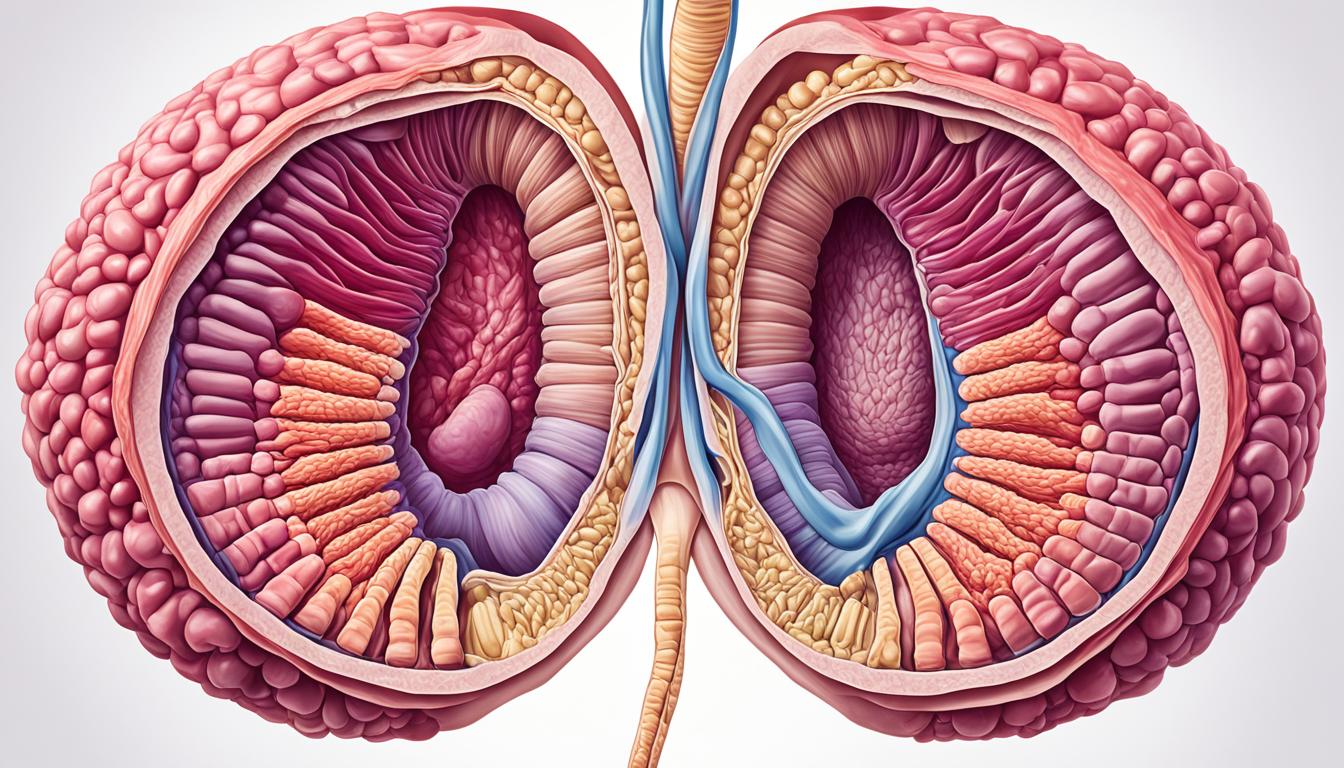Rectal prolapse is when the rectum pushes out through the anus. It’s more common in women over 50. About 2.5 out of every 100,000 people get it.
Patient may feel a bulge in the anus or see a red bulge sticking out. They might have trouble controlling bowel movements, constipation, and even poop themselves.
There are three kinds: internal, partial, and complete. It can happen because of nerve damage, a weak anal sphincter, or chronic constipation.
Doctors diagnose it with a physical exam or a colonoscopy. Surgery is a common treatment. People can have abdominal surgery or surgery near the anus. Preventing it involves a high-fiber diet, lots of water, and regular exercise.
Rectal prolapse is treatable. Surgery can make patients feel better.
Key Takeaways
- Rectal prolapse is when the rectum comes through the anus. It shows as a bulge and affects bowel control.
- There are three types, depending on how much of the rectum comes out.
- Nerve damage, weak muscles, and constipation can cause it.
- Doctors find it with an exam or colonoscopy.
- Surgery is a usual fix, with options like belly or anal area surgery.
Types, Causes, and Diagnosis of Rectal Prolapse
Rectal prolapse appears in various ways. Each type shows different signs and seriousness. Knowing these types is crucial for diagnosis and care.
1. Internal Prolapse: In internal prolapse, the rectum moves down but stays inside the body. It’s sometimes called hidden prolapse.
2. Partial Prolapse: With partial prolapse, a part of the rectum comes out. This often makes it hard to use the bathroom and causes pain.
3. Complete Prolapse: Complete prolapse is when the whole rectum comes outside. It causes the most symptoms and needs quick medical help.
Causes of Rectal Prolapse:
Several things can cause rectal prolapse. These include:
- Chronic constipation makes the rectum work too hard, leading to muscle weakness.
- Weakening of the anus muscles can happen after giving birth, getting older, or having past rectal surgery.
- Damaged nerves in the pelvic area may cause muscle control loss, which can lead to prolapse.
Diagnosing Rectal Prolapse:
Doctors diagnose rectal prolapse with a detailed physical check. They might have the patient push as if having a bowel movement to see the prolapse. They could also suggest a colonoscopy to check for other issues in the rectum.
To diagnose and treat rectal prolapse well, understanding its types and causes is key. This knowledge helps doctors choose the best care for each patient.
Treatment and Prevention of Rectal Prolapse
Rectal prolapse is a serious condition needing proper care to feel better. Surgery is often the best way to treat it. This surgery can happen either through the stomach or near the anus. Abdominal surgery fixes the rectum in place for a long while. The other kind of surgery involves fixing a part of the rectum.
Talking with a doctor is very important if you have rectal prolapse. They will help you pick the best treatment. This will depend on your health and history.
It’s key to try and prevent rectal prolapse. Keeping your gut healthy is a big step. Eat foods high in fiber for better digestion and less strain on your body. Also, don’t forget to drink enough water and move your body often. This keeps your muscles strong, including those in your pelvis.
These steps can help lower your chance of getting rectal prolapse. They also boost your overall health.

